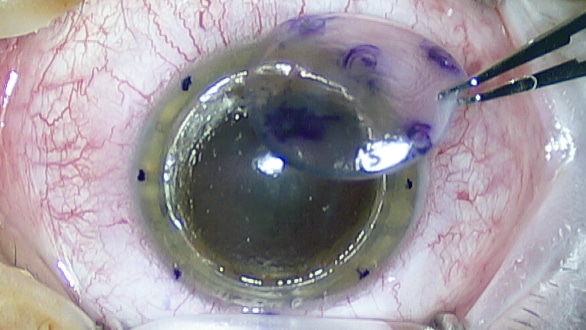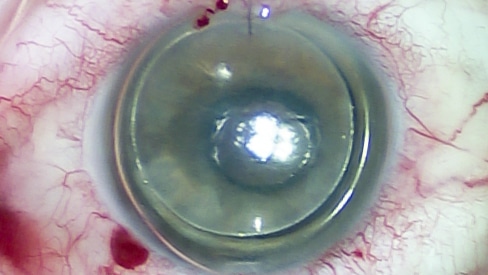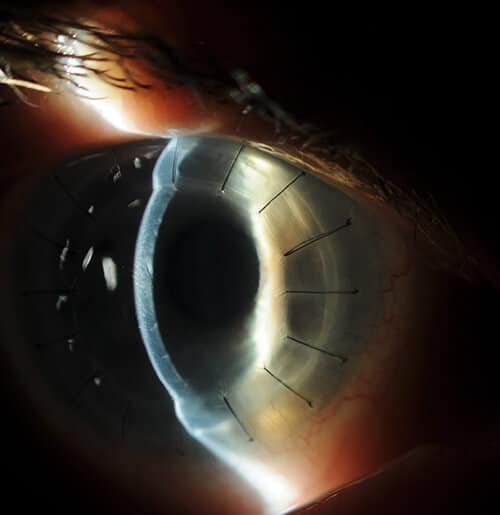There are three basic types of corneal transplants:
1) Replacement of the front part of the cornea: anterior lamellar keratoplasty (ALK), below:

2) Replacement of the back part of the cornea: endothelial keratoplasty (DSAEK, DMEK), below:

3) Replacement of the full thickness of the cornea: penetrating keratoplasty (PKP), below:

Which type of these transplants is right for you depends on several factors. If the problem is localized to either the front of the cornea or the back of the cornea, then only that portion of the cornea needs to be transplanted. If the problem involves all of the layers of the cornea, or if the partial corneal transplants will not be sufficient to solve the problem, then a full thickness corneal transplant is necessary.
Patients that need a corneal transplant that have keratoconus most often have an anterior lamellar keratoplasty (ALK) unless hydrops has occurred in which case a penetrating keratoplasty is usually necessary.
Patients that need a corneal transplant that have endothelial dystrophy (Fuchs’ Dystrophy) or corneal failure from complicated cataract surgery usually have endothelial keratoplasty (DSAEK or DMEK).
Penetrating keratoplasties (PKPs) are performed for previous PKPs that have failed, DMEKs or DSAEKs that have failed repeatedly, full thickness corneal scars from infections or trauma and other situations in which the surgery may be very complex and involves multiple layers of the cornea.
If you have questions, I am happy to help determine which type of corneal transplant may be necessary for your particular situation.
Give my office a call at: 713-668-6828 x2395.


